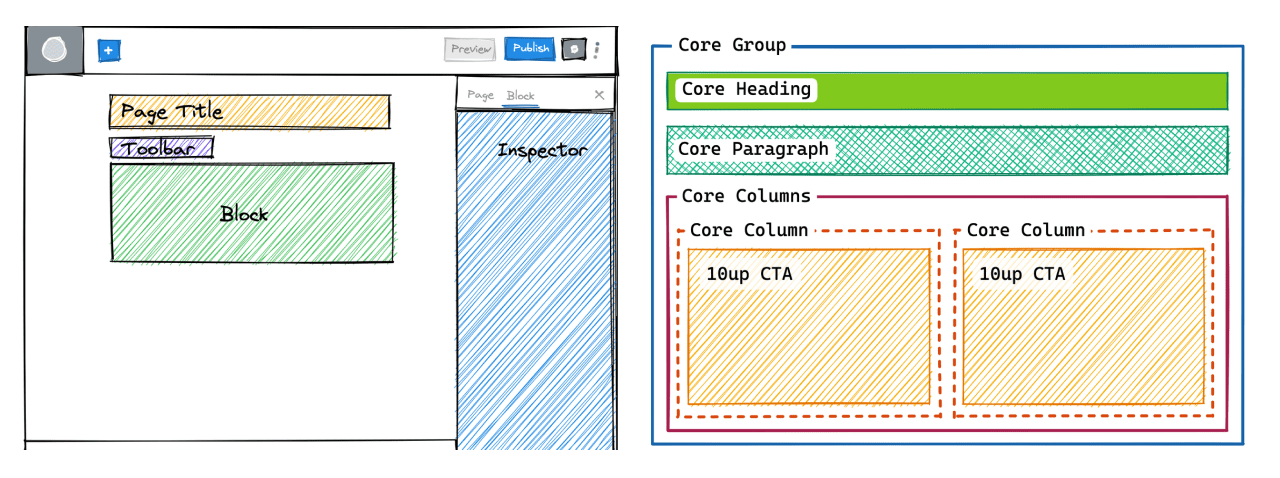10up publicly releases its Gutenberg Best Practices

In keeping with our mission to make a better web, 10up strives to strengthen and contribute back to the open-source technology ecosystem we build upon. We contribute thousands of hours each year and open source innovations like ElasticPress, which integrates Elastic and WordPress; ClassifAI, which brings AI and machine learning to WordPress; and Distributor, which solves for cross-site content reuse. We also share our Engineering Best Practices and Open Source Best Practices as public projects on GitHub.
In that same spirit, we have now publicly opened up – and open sourced – our WordPress Gutenberg Best Practices documentation.
The Gutenberg Best Practices project began as an internal onboarding and continuing education resource detailing the “10up Way” when it comes to the WordPress block editor and client editorial experience. In deciding to open up in beta as a public resource, our goal is to help developers learn about the WordPress block editor and extend it through the customization of core blocks and the carefully crafted development of custom blocks.
Engineering for the WordPress Block Editor
Gutenberg, the development codename for the current WordPress content editor, introduced an entirely new editorial paradigm for content creation and page building within WordPress. Because the block editor is still fairly new, it is advancing quickly and changes are introduced regularly; as such, learning opportunities are scarce and we have felt an absence of best practice documentation that meets 10up standards for craftsmanship.
Our Gutenberg Best Practices are meant to work in tandem with the WordPress Core documentation and expand upon its foundation to provide a more client-services-centric approach tailored to engineering enterprise-level editorial experiences.
The new Gutenberg Best Practices microsite is our documentation, training, and resource library for the WordPress block editor. We’re just getting started – hence a beta designation – but intend for this to be an ever-evolving archive of training that is updated as WordPress itself is updated.

The site is divided into three sections:
- Reference: Editor and block-related documentation with detailed explanations covering everything from block anatomy to block patterns to using blocks in custom post types.
- Training: Learn how 10up crafts custom user experiences for the WordPress editor. Access our Gutenberg training with step-by-step lessons for customizing core blocks and building custom blocks.
- Guides: Discover an archive of articles that deep dive into specific engineering objectives and unique edge cases, and share findings from research, development exploration, and conceptual testing.
In sharing our best practices, we hope to encourage adoption of the block editor, help developers create, innovate, and advance the block-building paradigm, and elevate the greater WordPress community.
To peek behind the scenes and see how 10up thinks about engineering for the WordPress block editor, visit the Gutenberg Best Practices microsite and have a look around.
To share your experiences, make a contribution, ask questions, or introduce new ideas, visit the Gutenberg Best Practices open-source GitHub project. We welcome community contributions across all of our open-source projects that are in tune with our philosophies and look forward to collaborating with you.
If you’re looking for a team to help build (or teach you how to build) outstanding web editorial experiences, get in touch. And if you want to be part of a team that builds those experiences – one that’s committed to sharing our expertise with a larger community – check out our open job positions.